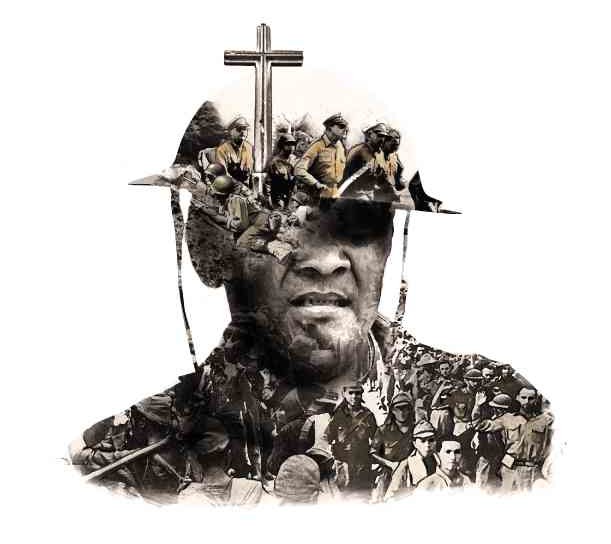Why we remember Bataan
So why should Filipinos remember the Fall of Bataan? Wasn’t this a day of ignominious defeat?
Not so. In fact, the story of Bataan’s resistance is a major epic of Filipino heroism.
The Japanese gave invasion commander Gen. Masaharu Homma 50 days to conquer the Philippines, probably thinking that their combat-hardened veterans who had fought in China could easily overwhelm the half-trained and ill-equipped recruits of the Philippine Army.
But it took 130 days, by the count of historian Uldarico Baclagon, for the Japanese to bring Bataan to its knees.
Everywhere else, in the first sweep of conquest, deadlines were easily met. Only in the Philippines was there a delay, and Gen. Homma was retired in disgrace for this failure.
Part of the failure was the denial of Manila Bay and its harbor as staging area for Japanese operations. While all the initial objectives were attained except in the Philippines, extended operations farther out relied on Manila for the staging operations.
The first Japanese setback came the day after Corregidor fell in the Battle of the Coral Sea on May 7, 1942. A Japanese invasion convoy to Port Moresby in eastern New Guinea, which was dominating communications between Australia and the United States, was turned back.
The tide was beginning to turn, and the stiff resistance offered by Bataan and Corregidor proved significant.
A little known consequence of that resistance was revealed by Professor Ricardo T. Jose of the University of the Philippines.
A US Navy code-breaking group was in Corregidor until March 1942, intercepting and decoding Japanese messages. If Bataan had fallen sooner, the code-breaking would have stopped and much valuable intelligence would have been lost.
Local victories
During the three-month battle, the United States Armed Forces in the Far East (Usaffe) scored local victories—the Battle of the Points when they repulsed Japanese efforts to land from the sea, and the Battle of the Pockets, when the invading Japanese, who had tried to penetrate the front line, were surrounded and wiped out.
The Bataan resistance enabled President Manuel L. Quezon and Vice President Sergio Osmeña, along with the Philippine Cabinet, to leave the country and set up a government in exile in Washington.
It also enabled Gen. Douglas MacArthur to go to Australia, from where he led the liberation of the Philippines from the Japanese two and a half years later.
The departure of the principal personalities from the Philippine government clearly signified that Bataan would not be reinforced, and that expectations of a mile-long convoy were illusory.
Meanwhile, the Japanese were broadcasting blandishments to the doomed garrison urging a surrender. But the “Battling Bastards of Bataan” fought to the end with stubborn courage.
One must emphasize that 85 percent of the Bataan force consisted of Filipinos, with only 15 percent being Americans.
The Filipino troops came from all over the country and from all social classes.
My uncle Col. Santiago Guevara of the Philippine Scouts, who was a Commandant of Cadets at the Philippine Military Academy (PMA) in Baguio, was ordered to the lowlands, along with the PMA cadets, after five days of war.
Also from the north was a contingent of Igorots who distinguished themselves in jungle fighting, as reported by Associated Press correspondent Clark Lee in “They Call It Pacific.”
The Igorots were part of the five divisions from Luzon.
Our family driver, Irineo Dagot, a road laborer in Palawan, was called to active service as well in November 1941 in Canlubang, with the 41st Division under Gen. Vicente Lim.
His mostly Cuyonon unit (from northern and central Palawan, very few of whom could speak Tagalog) joined Caviteños and Batanguenos in one of the Luzon divisions.
Two divisions from the Visayas, one of which included decorated war hero and aristocratic Visayan Venicio Jalandoni, reached Luzon after the war began.
Some officers came from Mindanao.
Death March
The infamous Death March after the surrender of Bataan on April 9 was considered one of the major Japanese atrocities.
The prisoners were made to walk from Bataan to Capas, Tarlac through San Fernando, Pampanga, a trek of some 100 kilometers under the summer heat, with little food and water.
Those too weak to keep pace with the others risked being bayoneted. Civilians, including pregnant women, who tried to help the prisoners, were killed. (See related story on Page A14).
Of the estimated 78,000 men at the start of the final Good Friday offensive on April 3, some 66,000 were Filipinos and 12,000 were Americans.
Of the latter, just under 10,000 reached the prison camp; of the former, about 54,000.
Of this number, only 28,000 survived imprisonment, reduced by starvation, disease and cruelty. In other words, more men died in the prison camp than in combat or the Death March.
Indeed, given the war gains that led to the Allies’ eventual victory in the Pacific war, the delayed Fall of Bataan has become a symbol of Filipino heroism and endurance.















